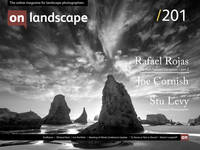Richard Kent chooses one of his favourite images

Richard Kent
A passionate amateur, equally at home in the landscape, the urban jungle or snapping people on the street. Never mastered the darkroom but now uses the same mindset to process raw files – test print, physical mark up, local dodge/burn adjustments, process to taste and PRINT. For me, the print is everything. No website. No social media. A few images published in magazines, some competition awards, and a couple of shows of my work but, for the most part, blissful anonymity.
It was an unexpected surprise when Charlotte invited me to contribute an End Frame… but, like many before me, my initial enthusiasm took a dive when I started to think seriously about it – a favourite image – just one – out of the hundreds of favourites that delight and inspire me – some created by famous photographers, others by undiscovered genius’s who I am fortunate to count as friends – how could I do that?
I was on holiday when I got the call, so had time and space to think about my choice. It didn’t help. But once I got home, inspiration took hold and suddenly I knew what I would present to my fellow readers.
So, here we have an image from Ray K. Metzker, an American photographer who throughout a 60+ year career (born 1931 – died 2014) pushed so many boundaries to create four or five bodies of amazing work – any one of which would have been enough for most people.
Apparently, he was a quiet man. But he had a bold vision. He studied at The Institute for Design in Chicago in the late 1950s and then took off to Europe. The time he spent travelling fixed his creative point of view. He decided that ‘light’ would be his subject and that he would seek complexity over simplicity. If you look at any of his images – exclusively black and white – from then on you will see that singular purpose.
He is primarily known for his urban cityscapes – deep blacks, bright whites, structure and angles, silhouettes and anonymous passers-by. He pioneered selective focus and multiple exposure, and developed a technique of ‘composite’ images where he created a tapestry print from a whole roll of film!
But I learnt all this later. I first came across his photography in a book called simply ‘Landscapes’.

